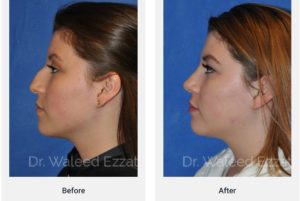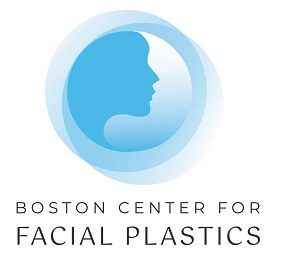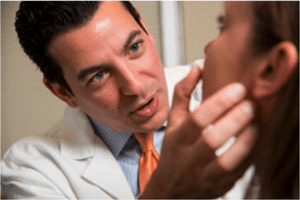According to recent data, rhinoplasty continues to be one of the most popular plastic surgery procedures among both men and women. If you’ve been thinking about changing the shape or size of your nose, or finding out if your breathing problems can be corrected through surgery, keep reading. There are a lot of things you should know about rhinoplasty before deciding if it’s right for you. Consider this your rhinoplasty need-to-know guide for advice and answers about everything from how to pick a plastic surgeon to how long your recovery will take.
Reasons People Get Rhinoplasty
People get rhinoplasty, sometimes referred to as a “nose job,” for different reasons. Men and women may feel better about their appearance and enjoy a boost in confidence after having rhinoplasty to correct a cosmetic concern. There are some common reasons people get rhinoplasty:
- To improve nasal asymmetry
- To alter size or position of nostrils
- To reduce the size of the nose for better proportion to other facial features
- To eliminate or improve humps or depressions on the nose bridge
- To reshape a nose tip that is bulbous, upturned or drooping
Common Non-Cosmetic Reasons to Have Surgery on Your Nose
If you are interested in a rhinoplasty for both cosmetic and functional improvement, it’s best to consult with a facial plastic surgeon who is also an ear, nose and throat specialist.The reasons for getting rhinoplasty and other nasal procedures are not always purely cosmetic, such as when someone has reconstructive surgery to correct disfigurement caused by an injury. Some other non-aesthetic reasons people may have nasal surgery include the following.
- Deviated septum: The septum is a thin wall that separates your left and right nasal passages. Deviation simply means that the septum is displaced to one side or the other. A deviated septum can be present at birth or it can occur as the result of an injury. A deviated septum can worsen over time, as part of the natural aging process. When the deviation is severe enough, it can cause nasal obstruction. This can result in breathing issues, dry mouth, pain or pressure, and difficulty sleeping. Surgery to repair a deviated septum, septoplasty, is often done at the same time as rhinoplasty.
- Large turbinates: Turbinates are structures inside the nose that help to warm cold air before it enters your lungs. They also help to baffle and direct incoming air flow. The turbinates are covered in tiny cilia, which serve to filter out airborne irritants and contagions that would otherwise enter your body. If the turbinates are chronically enlarged, you may feel congested and have trouble staying asleep. Turbinate surgery can also be combined with cosmetic reshaping.
- Breathing issues: A deviated septum and enlarged turbinates are two of the most common causes of breathing troubles. Other things, such as nasal polyps, can be at fault. You may need to have a nasal endoscopy to determine the exact cause of your troubles.
Choosing Your Rhinoplasty Surgeon
Rhinoplasty is one of the most difficult plastic surgery procedures. This is why it’s of utmost importance to select your plastic surgeon very carefully. Booking a rhinoplasty consultation is fundamental part of finding the plastic surgeon you want to work with. Here’s what you need to look for:
- Board certification: Choosing a plastic surgeon who is board certified should be at the top of your priority list. To become board certified, a plastic surgeon must complete years of specialized training beyond medical school. The artistry and skill required to do quality rhinoplasty is not something that comes easily and you should never put your face in the hands of someone who is not adequately credentialed.
- Experience: You’ll want a plastic surgeon who has a lot of experience with facial plastic surgery, particularly rhinoplasty. Plastic surgeons who diversify their practice too much may not necessarily specialize in any one area. Rhinoplasty is a surgery that should only be done by someone who has an advanced knowledge of the intricacies of nasal anatomy.
- Surgical philosophy: Ideally, you will want to work with a plastic surgeon who uses a patient-centered approach. This means that he or she believes rhinoplasty shouldcomplement a person’s unique features rather than completely alter them. Each person’s face is different, and a nose job should be tailored to the one having it.
- Patient reviews and testimonials: Ask about reviews and ratings from past rhinoplasty patients. You may be able to find these on internet review sites such as RealSelf.com, or on a plastic surgeon’s own website. At your consultation, you can ask whether there are past rhinoplasty patients who would be willing to talk with you about their experience.
- Rapport: Make sure you feel good about your relationship with a plastic surgeon and the other staff at the practice. Feeling comfortable and safe with your plastic surgeon contributes greatly to your level of satisfaction with the final results. A plastic surgeon should listen carefully to your goals, your concerns and your questions. If you ever feel as if your opinions or concerns are being ignored or dismissed, keep looking until you find a qualified plastic surgeon who is the right fit for you.
- Accredited operating facility: Talk to your plastic surgeon about where he or she plans to do your rhinoplasty. If you don’t hear anything about it being in a hospital or other accredited operating facility, speak up. You should only have surgery in an accredited facility for several reasons.An accredited facility is required to keep meticulous records and adhere to stringent standards in regard to your health and safety.
If your plastic surgeon is operating at an accredited facility, you can be assured that a licensed anesthesiologist will be the one to administer your anesthesia. Accredited facilities are also accountable to governing bodies that help ensure compliance with standards and best practices (which are constantly reviewed and updated to improve quality of care).
Looking at Before and After Pictures

- Look for photos of people who started out with noses similar to yours and ended up with results most like what you’re hoping for.
- Make sure the photos are taken from the same angle in both shots.
- The lighting also matters. The same (or a very similar) light source should be used in both pictures and the lighting should come from the same angle.
- Ask questions about the photos. Find out whether you’re looking at the results of a first rhinoplasty or a revision rhinoplasty. Ask if the person also had nasal surgery done at the same time.
If a surgeon refuses to provide before and after pictures at your consultation, it’s best to find another.
Being a Good Candidate for Rhinoplasty
At your rhinoplasty consultation, your plastic surgeon will determine whether you are a good candidate for this type of surgery. There are several factors that can influence your candidacy.
- Your Age: Your face must reach skeletal maturity before you can be considered a candidate for rhinoplasty. The earliest this typically happens for most patients is around age 16.
- Your Reasons: The reason you have chosen to pursue rhinoplasty plays a very important role in helping your plastic surgeon determine your candidacy. It’s perfectly normal to seek out rhinoplasty purely for aesthetic improvement.
- Your Health. In order to be a good surgical candidate, you must be in good general health. If you have any medical conditions or health concerns, discuss these with your plastic surgeon to be sure they won’t interfere with the success or safety of rhinoplasty.
Bad Reasons to Have Rhinoplasty
Always keep in mind that even the people who are paid to be beautiful often have the aid of makeup, lighting and digital retouching to help them appear impossibly gorgeous.A desire to enhance your appearance and boost your self-confidence is a great reason for wanting to have rhinoplasty. However, there are plenty of unhealthy reasons to want nose surgery. If you are interested in rhinoplasty (or any plastic surgery procedure) for any of the following reasons, you may want to hold off while you improve your mental outlook.
- To please someone in your life. Whether it’s a spouse, a family member or a friend, never consider altering your physical appearance to live up to someone else’s expectations or as a response to criticism.
- To win over a love interest or make more friends. A person’s interest in you shouldn’t (and probably doesn’t) hinge on what your nose looks like.
- To land your dream job or advance your career. It’s true that rhinoplasty can help you feel more confident in settings like job interviews and business meetings, but a good-looking nose will not determine whether or not you get the position or promotion.
- To save a relationship. Just like wanting plastic surgery to attract someone, having work done to keep someone in your life is equally ill-advised.
- To fit societal or media standards. In today’s world, it can be difficult to feel attractive and confident when there are so many unattainable beauty standards being shown to us. You should only have rhinoplasty if it’s what you want, not what you think you need to fit in.
What Happens during Surgery?

You may have heard that it’s necessary for your nose to be broken during rhinoplasty. In reality, this is not always true. The exact method used will depend on the anatomy of your nose and the changes you want to be made. Breaking is typically only done in cases where the nose needs to be significantly thinned or straightened. Your plastic surgeon will help you understand what will happen during your rhinoplasty.
Your plastic surgeon may place the incisions inside or outside your nose. This decision will be made on a case-by-case basis.
- Endonasal: The endonasal, or “closed” method, is when the incisions are placed inside the nose.
- External: This method, often called “open” rhinoplasty involves one or more incisions on the outside of the nose. This allows the skin to be lifted, giving the plastic surgeon easier access to the bones and cartilage.
Recovering from Rhinoplasty

Most people can go back to work after about a week. However, some people choose to take additional time off to allow the bruising and swelling to subside more. The right amount of time to take off depends on your particular situation and the type of job you have. Your plastic surgeon can help guide you on how much time you’ll need before returning to your job. As a general rule, you should avoid strenuous activity and lifting anything greater than 5 pounds for the first month after your rhinoplasty.
It can take a long time for you to see the final results of your rhinoplasty. That’s because your bone, cartilage and skin require several months to heal and normalize. In fact, it’s quite common for people to dislike what they see when their nose is revealed after surgery. Just remember that what your nose looks like in the beginning may not be reflective of what your final results will look like.
It is imperative that you follow the instructions your plastic surgeon gives you for recovery care. This will include any medications you should take, things you should avoid, guidelines on caring for your surgical site and what to look for as you heal.
Rhinoplasty by Gender

Preparing for Rhinoplasty
A plastic surgeon must have keen aesthetic eye and the experience to understand how to do rhinoplasty differently depending on factors such as a patient’s gender.Once you decide to go ahead with rhinoplasty, your countdown to surgery begins. Use this time to prepare yourself, physically and otherwise.
- Eat Healthy: Eat a balanced, nutritious diet to keep your body in fighting shape. Keep up the good eating habits while you’re healing and you’ll boost your chances of having a faster and more comfortable recovery.
- Quit Smoking: If you’re a smoker, your plastic surgeon will require you to quit for a period of time before you can have surgery. Don’t ignore this advice. Nicotine restricts blood flow, which increases the risk of surgical complications.
- Prepare Your Recovery Space: If you’ll be recuperating at home, set up a nice space where you can relax comfortably. Make sure you have soft blankets and pillows (you’ll need a few so you can prop your head up). A lot of people clean and organize their home right before surgery to help make their recovery as relaxing and stress-free as possible.
- Enlist Help: In the days following your rhinoplasty, you’ll feel drowsy and need to rest. Get someone to help you with household duties such as meal preparation and childcare, if needed.
- Stock Up: Make a list of everything you’ll need during your recovery and shop for it ahead of time. Pick up any medical supplies and prescriptions your plastic surgeon gives you. You may want to make sure your Netflix subscription is paid up and grab a stack of magazines or a good book to keep you occupied during your recovery.
Rhinoplasty and Your Voice
One common rhinoplasty myth is that your voice will inevitably change after having a nose job. This can be of particular concern for people who use their voices for a living such as singers and professional speakers. A skilled and experienced plastic surgeon, in many cases, can work with such precision that your voice will not be altered. If this is something that gives you pause, discuss it with your plastic surgeon.
Managing Your Expectations
There is no such thing as a perfect or ideal nose.Each person’s nose and face is different. Your nasal anatomy – the muscles, cartilage, bone and even the thickness of your skin – all affect what can be achieved through rhinoplasty. Many people go in wanting a certain nose, often based on a celebrity or model. The truth is that what looks great on one person may not be so desirable – or even possible – on you.
In fact, most of the famous people whose noses we admire do not have perfectly symmetrical features. It is the slight “imperfection” that often enhances or defines a person’s attractiveness. One photographer’s fascinating project even sought to show that having absolute symmetry is not always better. A knowledgeable plastic surgeon knows this and will help guide you to figure out what would look good with your bone structure, features and facial dimensions.





